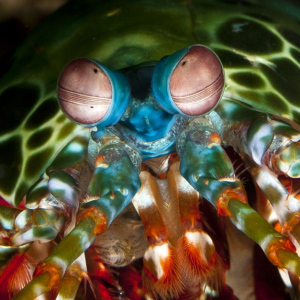A giant oarfish measuring 4.5 meters long washed ashore and attracted the attention of residents in Hinundayan town, Southern Leyte.
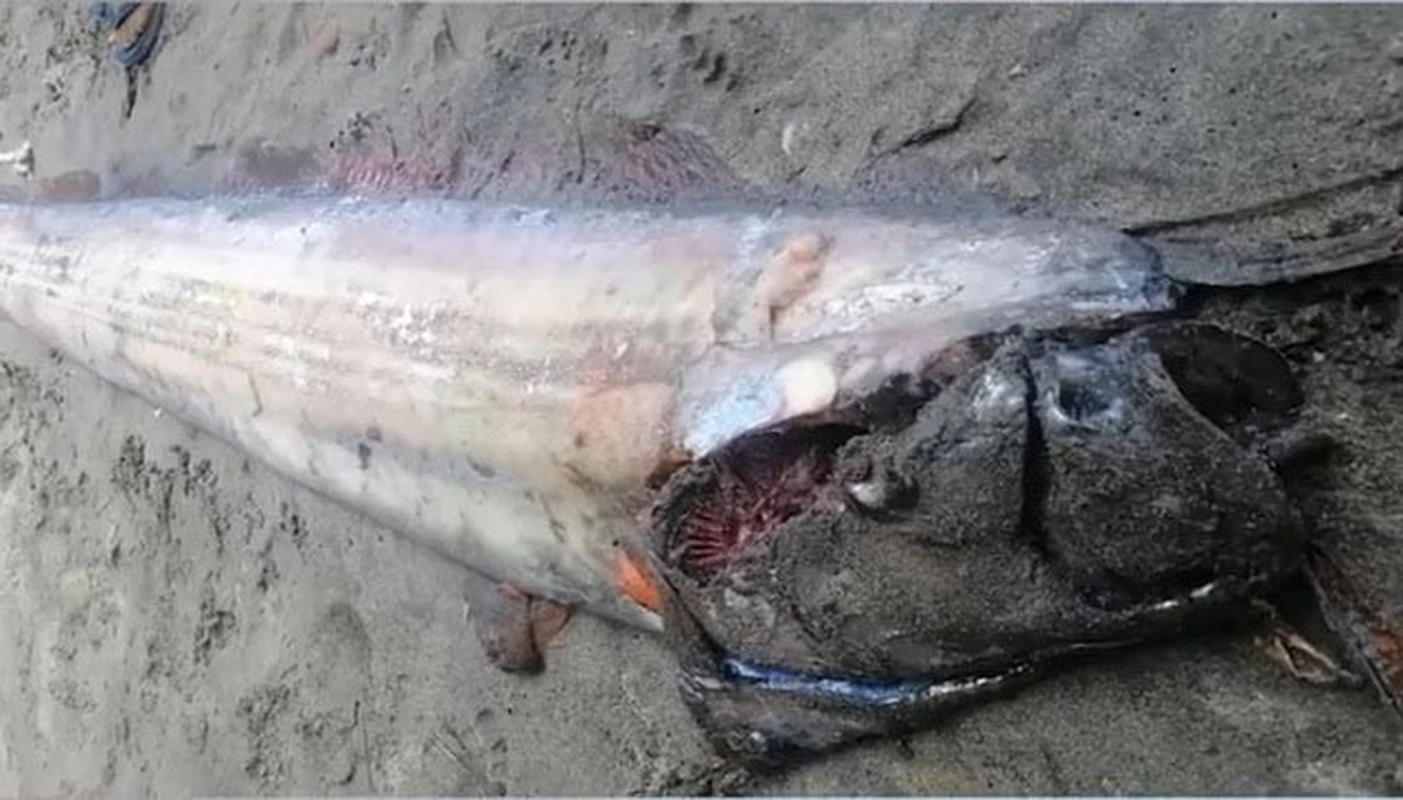
Despite the injury, the ” sea monster ” was still breathing. Arnel Resma Casido, who lives near the sea, came to see when his neighbors shouted about the giant fish near the shore. Scientists say the oarfish lives at a depth of about 1,000 meters below sea level. This is the longest bony creature in the world, can reach a length of up to 17 meters and weigh up to 270 kg. (Photo cut from clip)
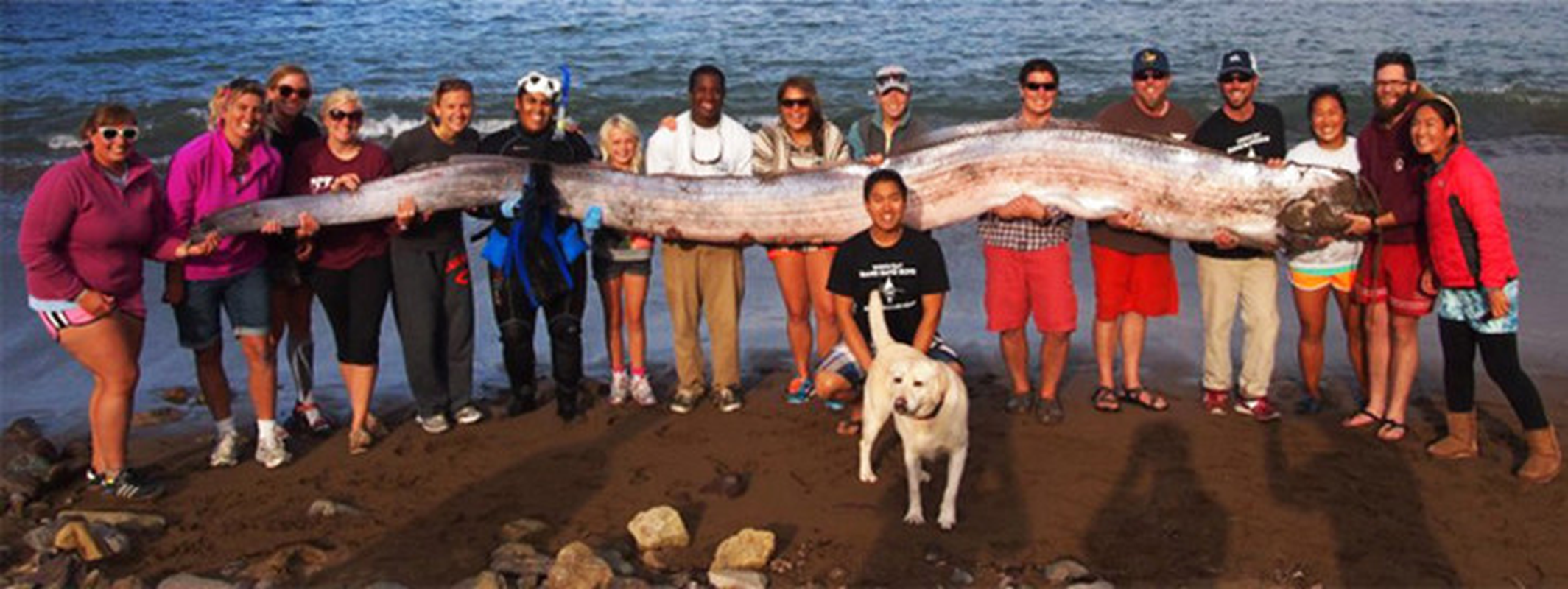
Oarfish have silver bodies and are sometimes called “king of herrings” because of their similar appearance to this small fish. However, they are named oarfish because of their long oar-like pectoral fins. (Photo: adriaticnature)
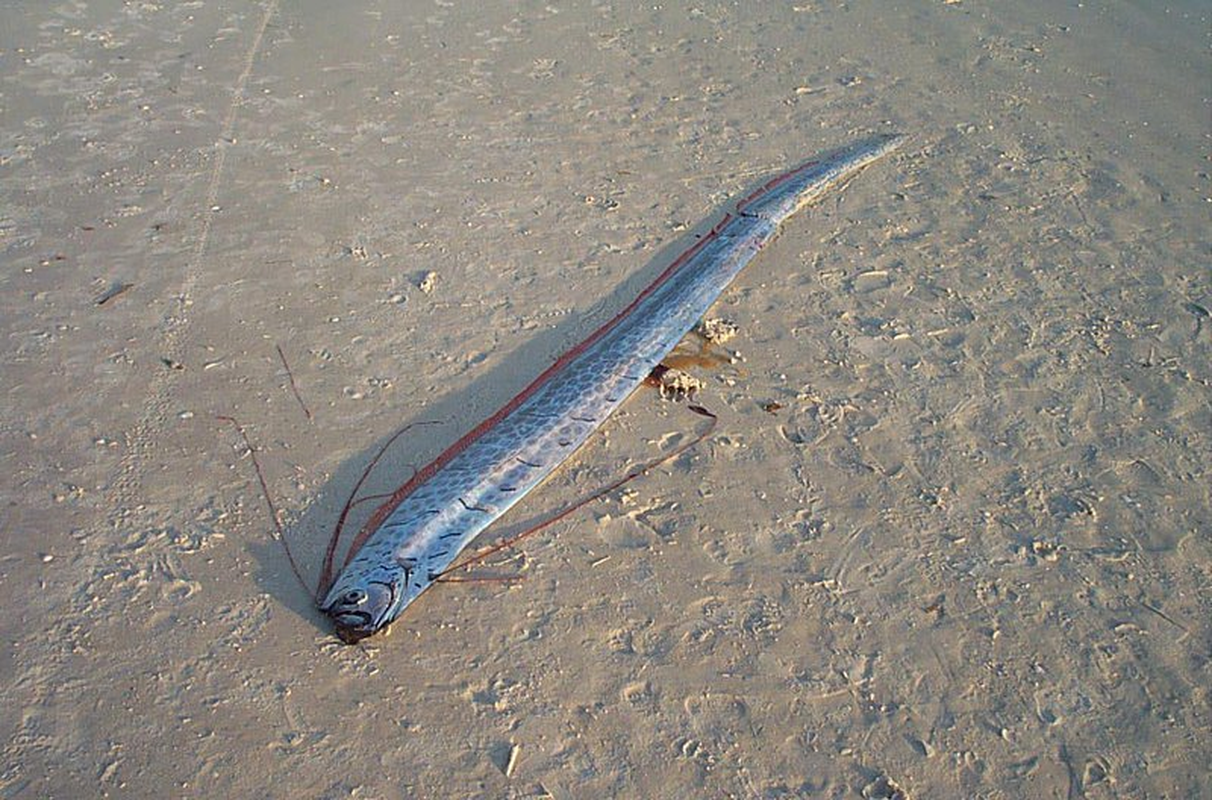
In folklore, oarfish are known as “sea monsters” that can predict earthquakes. Although there is no concrete scientific evidence, there are reports that oarfish beaching may be related to the occurrence of major earthquakes. (Photo: The Australian Museum)
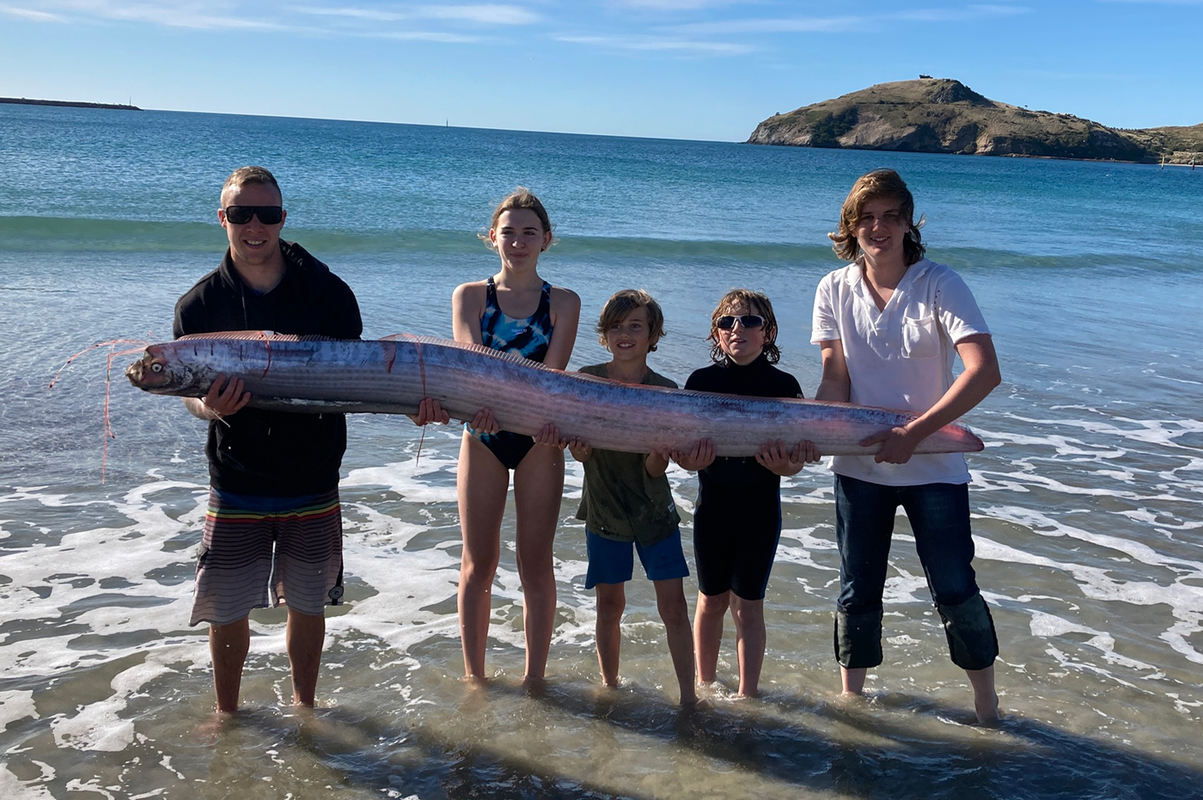
Although there are many different ideas and opinions about oarfish being able to predict earthquakes, these opinions are still relative and need further research to come to an official conclusion. (Photo: fishesofaustralia)

Although not much is known about this fish because it is rarely observed, it is said that its flesh feels mushy and sticky. (Photo: Flickr)
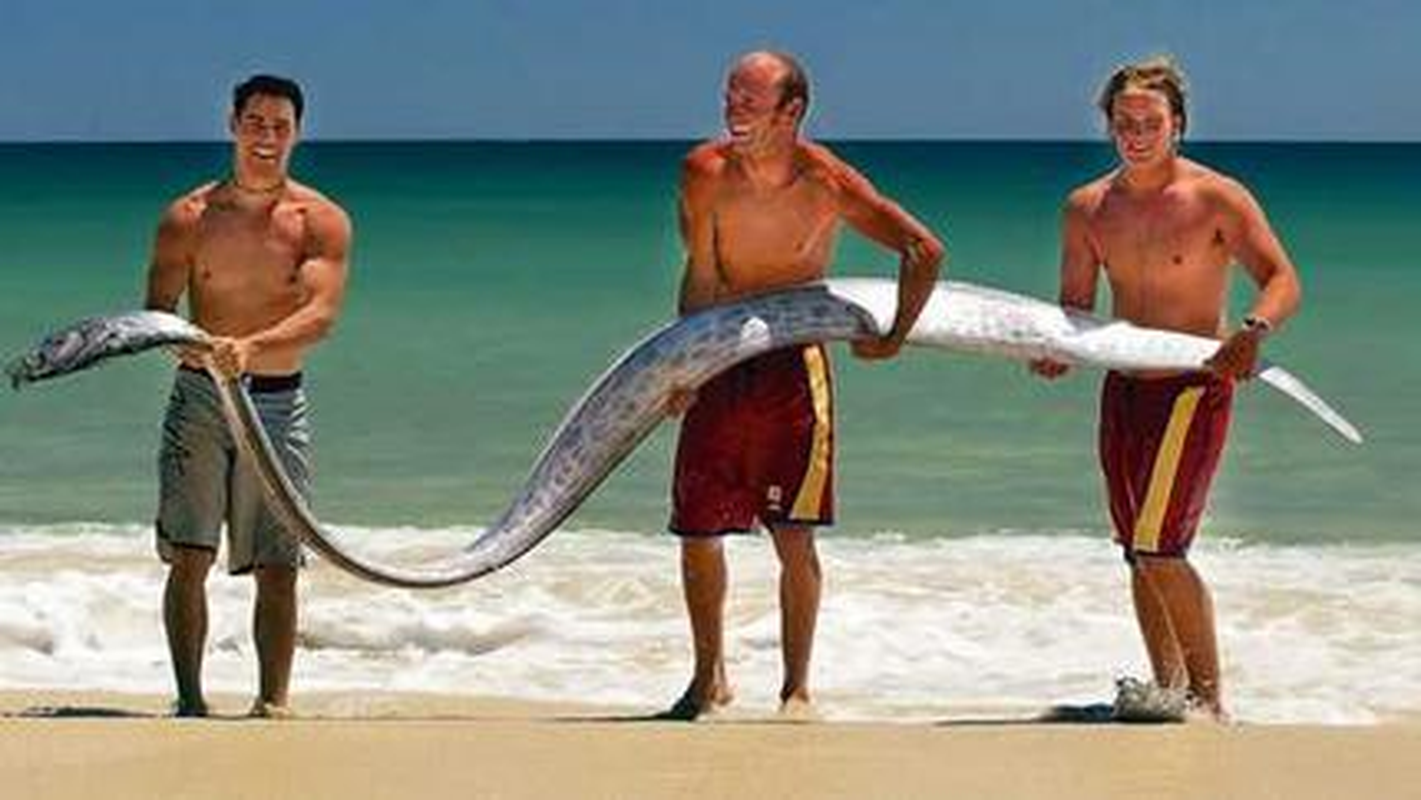
Oarfish are not dangerous to humans and only feed on tiny plankton. (Photo: Big Fishes)
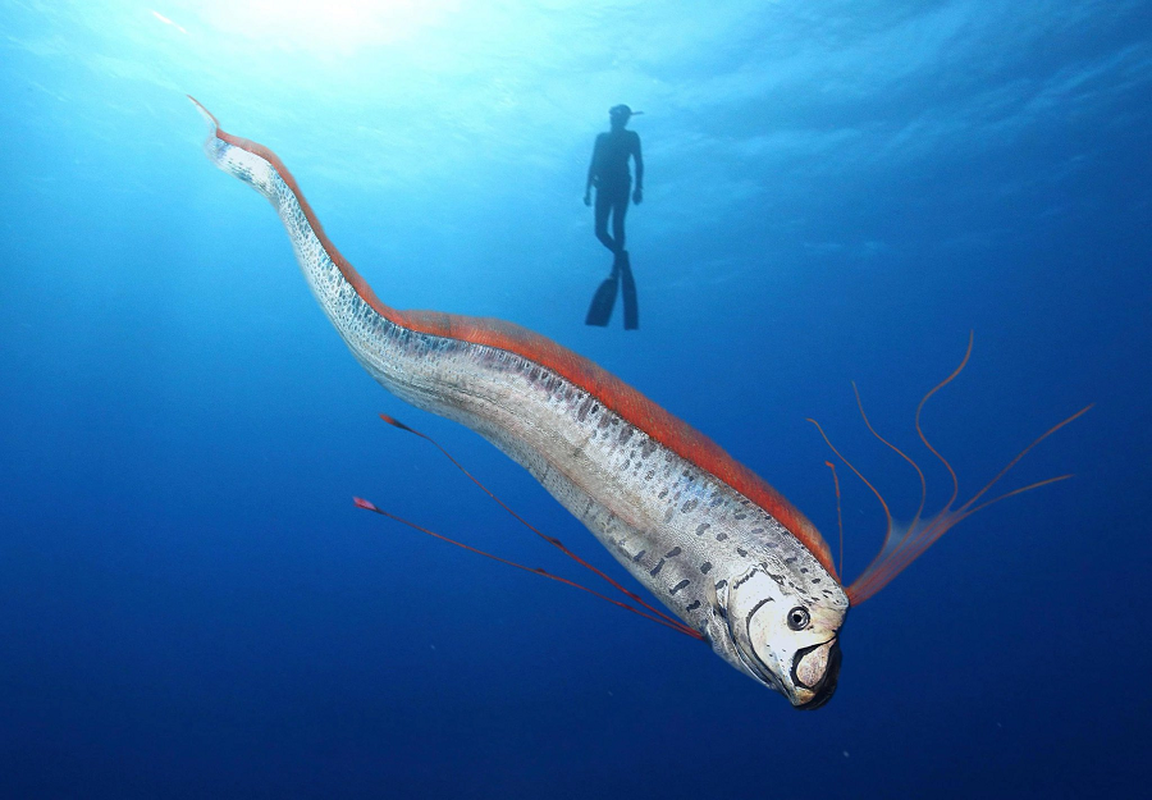
They do not have real teeth and only have small structures called rakers to catch small prey. (Photo: X)
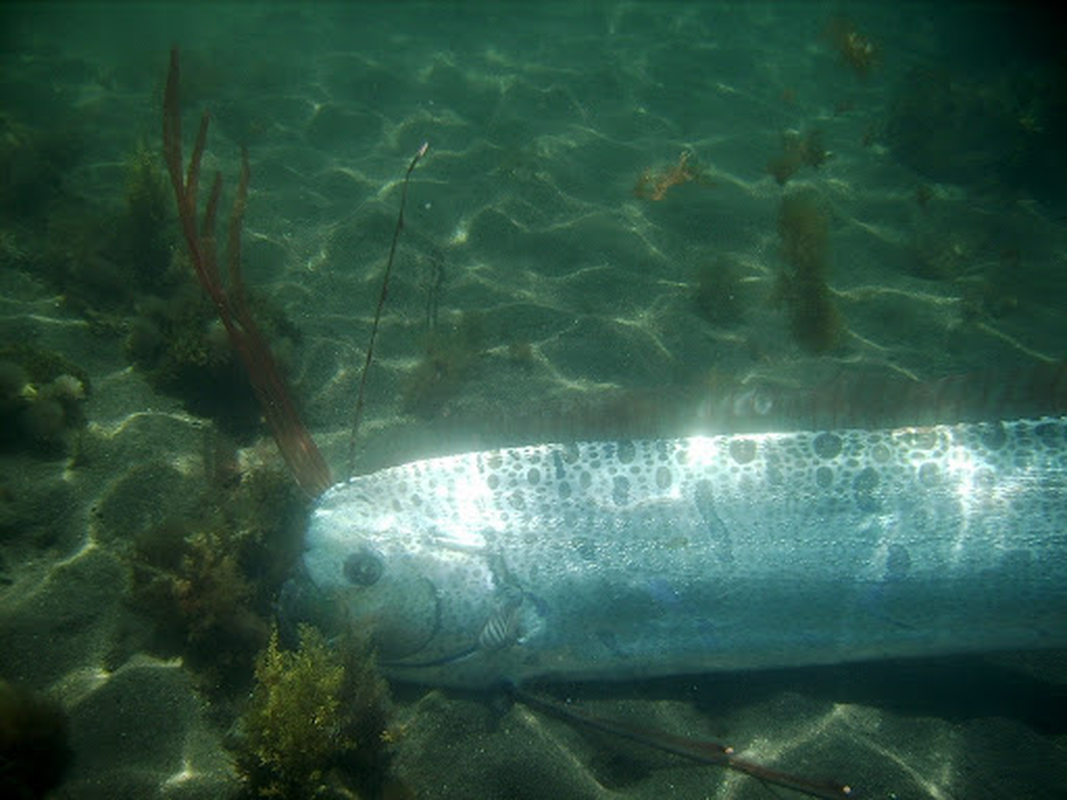
Unlike many other fish, oarfish do not have scales. Instead, they have a silvery coat made of guanine, which makes their skin surface quite soft and vulnerable. (Photo: Diver.net)




